Occupational environment monitoring at the plywood factory
99,000 ₫
Note: The above price is calculated for one sample, the price may vary depending on the area of the environment that needs monitoring and the movement of the market. For more accurate price support, please refer to the quotation table or contact directly with our consulting staff.
Environmental monitoring of a plywood factory is a session of collecting, analyzing, and evaluating factors in the workplace that may harm workers health.
Table of Contents
Toggle1. Overview of Plywood Manufacturing Factory
a. What is a plywood manufacturing factory?
A manufacturing factory for plywood is a facility where wood is processed to produce plywood. Plywood is a type of construction material made from wood. The production process includes steps such as processing wood into small pieces, treating them, and pressing these pieces together to form a thick and rigid panel.

b. Production stages in a plywood manufacturing factory
The main production stages in a plywood manufacturing factory include:
- Wood processing: Raw wood is prepared and treated before being used for plywood production. Wood processing includes cutting logs into blocks, peeling, chipping, and slicing into small pieces.
- Wood softening: Processed wood pieces are put into a wood softening machine, where they are treated with heat and steam to become flexible and pliable.
- Pressing and gluing: Softened wood pieces are pressed tightly together using a press and bonded with glue or adhesive.
- Drying: After pressing and gluing, the panels are sent to a drying machine to remove moisture and improve hardness and durability.
- Cutting and finishing: Dried panels are cut and finished to produce various sizes and shapes according to customer requirements.
- Quality control: Before packaging and shipping, panels are inspected to ensure compliance with quality standards and specifications.
- Packaging and transportation: Finally, panels are packaged and prepared for transport and distribution to retail outlets or construction projects.

c. Types of machinery used in plywood manufacturing factories
Various machinery is used in plywood production. Some common machines include:
- Wood saw: Used to cut wood into blocks or small pieces.
- Wood slicing machine: Used to slice wood into thin sheets.
- Wood sanding machine: Used to smooth and prepare the wood surface before pressing.
- Wood press: Uses high pressure and temperature to press wood pieces together into plywood panels.
- Drying machine: Removes moisture and dries the pressed panels.
- Cutting and finishing machines: Includes table saws, band saws, drills, planers, lathes, CNC lathes, grinders, glue spreaders, and other tools to cut and finish panels into desired sizes and shapes.
- Quality inspection machines: Includes thickness gauges, warp detectors, moisture meters, hardness testers, and other devices to ensure the quality of produced panels.

d. Occupational diseases in plywood manufacturing factories
Workers in plywood manufacturing factories may suffer from the following occupational diseases:
- Respiratory diseases: Exposure to wood dust and chemicals during plywood production can cause respiratory issues such as bronchitis, pneumonia, asthma, and other breathing problems.
- Skin allergies: Contact with wood, glue, and chemical treatments may cause skin allergies like dermatitis, itching, rashes, and other skin problems.
- Musculoskeletal disorders: Industrial work can lead to spine, muscle, and skeletal issues due to heavy physical activity, machinery use, and other physical impacts.
- Eye problems: Exposure to strong light and wood dust can cause eye inflammation, blurred vision, and other visual issues.
- Hearing problems: Noise in plywood manufacturing factories can result in hearing loss, tinnitus, and other ear-related issues.
To ensure worker safety, personal protective measures and safe working procedures should be applied, including protective clothing, safety training, dust and chemical control, regular health checks, and other measures to minimize the risk of occupational diseases.

e. Common types of plywood on the market
There are several types of plywood used in various applications. Common types include:
- Pine plywood: Made from natural pine wood, widely used in construction, furniture, and other applications.
- Glue plywood: Produced by gluing thin layers of wood together, it is the most common type of plywood used in construction, furniture, and woodworking.
- Industrial plywood: Made from synthetic materials such as wood chips, fibers, or composite wood materials. It is often cheaper and used in many construction and furniture applications.
- Water-resistant plywood: Used in applications exposed to moisture or water, such as flooring, wall paneling, or bathrooms. Treated to resist mold and water damage.
- Green core plywood: Made from recycled wood or sustainably sourced wood to reduce environmental impact.
- Fire-resistant plywood: Treated for better fire resistance than standard plywood, suitable for applications requiring high fire safety.
2. Overview of occupational environment monitoring services
a. What is occupational environment monitoring in plywood manufacturing factories?
Occupational environment monitoring (or workplace environment measurement) in plywood manufacturing factories involves collecting, assessing, and analyzing workplace environment indicators to implement timely measures, minimize environmental harm to workers’ health, and prevent occupational diseases. Occupational environment monitoring is mandatory for plywood manufacturing factories.
It plays a crucial role in safeguarding and improving workers’ health, as the main asset of a company, generating profit, is its workforce. Workers regularly exposed to hazardous factors above allowed limits may suffer health effects and occupational diseases.
REGISTER FOR OCCUPATIONAL ENVIRONMENT MONITORING SERVICE
b. Nam Viet’s occupational environment monitoring program
Nam Viet’s occupational environment monitoring program is developed by engineers specialized in labor safety and environmental protection. Aimed at ensuring workers’ health and safety, it employs modern measurement methods to monitor air quality, water, microclimatic, physical, and dust factors in the workplace. This program is vital for ensuring a safe working environment and protecting workers’ health.
Additionally, Nam Viet’s program contributes to research and development of solutions to improve workplace environment quality. With a dedicated and professional monitoring team, Nam Viet’s exclusive program represents a breakthrough in labor safety and environmental management in Vietnam.

c. Standardization in occupational environment measurement procedures
Standardization in Nam Viet’s measurement procedures is crucial for ensuring result accuracy. The program follows recognized standards and procedures of Ho Chi Minh City Department of Health. This ensures high reliability of collected data for workplace evaluation and informed decisions to improve occupational health.
These standardized procedures are conducted by experienced monitoring specialists, allowing managers and experts to trust An Toan Nam Viet’s results and make accurate decisions for protecting workers’ health and the environment.
Through standardization, An Toan Nam Viet demonstrates its commitment to a safe working environment and contributes to improving labor safety and environmental management in Vietnam.
d. Reporting occupational environment monitoring results in plywood factories
Monitoring results are prepared according to Form No. 04, Appendix III issued with Decree 44/2016/ND-CP and compiled in two copies: one for the workplace that contracted the monitoring and one for the monitoring organization.
Records are kept indefinitely in compliance with legal regulations.

e. Frequency of occupational environment monitoring according to law
According to Clause 2, Article 18 of the Labor Safety and Hygiene Law 84/2015/QH13, employers must conduct occupational environment monitoring to assess harmful factors at least once a year.
f. Deadline for submitting occupational environment monitoring reports according to law
The deadline is before December 31 each year. Enterprises of production facilities must submit monitoring reports to the local Department of Health where the factory has its headquarters and where employees work.
When there are changes in technology, production processes, or renovations that may introduce new hazards, enterprises must update labor hygiene records regarding harmful factors that require environmental monitoring.
g. Penalties for violating occupational environment monitoring regulations for employers
According to Article 27, Decree No. 12/2022/ND-CP dated 17/01/2022 on administrative penalties in labor, social insurance, and Vietnamese workers working abroad under contract:
- Clause 2: Fine from 2,000,000 to 5,000,000 VND for employers who do not publicly disclose monitoring results and hazard assessments to employees at the workplace immediately after results are available.
- Clause 3: Fine from 20,000,000 to 40,000,000 VND for employers who fail to perform occupational environment monitoring to control health hazards as required by law.
- Clause 4: Fine from 40,000,000 to 60,000,000 VND for employers who cooperate with monitoring organizations in fraudulent monitoring activities, but not to the extent of criminal liability.
3. Harmful environmental factors for workers in plywood production factories
Workers in plywood production factories may be exposed to several harmful environmental factors. The following are some environmental hazards that may pose risks to workers:
- Wood dust: The plywood production process often generates wood dust, and exposure to wood dust can cause respiratory issues such as pneumonia, bronchitis, and other respiratory problems.
- Chemicals: During plywood production, chemicals such as adhesives, colorants, deodorants, and fire retardants may be used. Exposure to these chemicals can cause skin allergies, eye and respiratory irritation, and may harm health if not properly managed.
- Noise: Machinery and production processes in plywood factories generate noise. Continuous and loud noise can cause hearing issues such as hearing loss, tinnitus, and stress.
- Temperature and humidity: Certain plywood production processes can produce high temperatures and humidity, especially during drying. Excessive heat or humidity can cause discomfort, fatigue, and negatively affect workers’ health.
- Heavy physical labor: Work in plywood factories may require heavy lifting, pushing, pulling, and handling of heavy objects. This can cause physical strain and lead to musculoskeletal and spinal injuries.
REGISTER FOR OCCUPATIONAL ENVIRONMENT MONITORING SERVICE
4. Measures to improve the working environment in plywood production factories
To improve the working environment in plywood factories and protect workers’ health, the following measures can be applied:
- Manage wood dust: Ensure an effective dust extraction system and perform regular maintenance to reduce airborne wood dust. Provide personal protective equipment such as dust-filtering masks to prevent inhalation of wood dust.
- Use safe chemicals: Choose non-toxic or low-toxicity chemicals and follow safe handling procedures. Ensure proper storage, use, and disposal of chemicals according to regulations.
- Control noise: Implement soundproofing systems and provide ear protection to reduce noise. Establish quiet areas and limit exposure time to high noise levels.
- Regulate temperature and humidity: Ensure air conditioning systems function properly to maintain temperature and humidity within acceptable levels. Provide appropriate work clothing to prevent overheating or excessive humidity exposure.
- Manage heavy labor: Provide training on safe working techniques and use support equipment such as forklifts or cranes to reduce physical strain and injury risk.
- Provide safety information and education: Offer regular occupational safety training for workers, including safety regulations, safe working procedures, and proper use of personal protective equipment.
- Conduct regular inspections: Periodically check the working environment to ensure compliance with safety standards and detect early any hazards that may affect workers’ health.
- Encourage worker participation: Create an engaging workplace environment and encourage workers to participate in improvement proposals and provide feedback on work environment issues.
- Regularly perform occupational environment monitoring in factories, collecting and analyzing harmful factors affecting workers to adjust and reduce hazards and prevent occupational diseases.
5. Benefits of periodic monitoring in plywood production factories
An Toan Nam Viet provides enterprises with excellent benefits when using occupational environment monitoring services in accordance with Decree 44/2016/NĐ – CP on managing and controlling harmful factors in the working environment affecting employees.
- Enterprises can proactively control harmful factors in workshops or factories.
- Receive recommendations on measures to reduce harmful factors and improve workplace quality.
- Indirectly protect human resources, the key factor in enterprise development.
- Reduce the impact of occupational diseases on health, thereby minimizing future medical expenses.
- Improved worker health enhances product quality and ensures stable production output.
- Ensure compliance with labor safety laws and avoid legal risks.
- Enhance credibility and professionalism in all aspects, elevating the enterprise’s brand.
Nam Viet’s environmental monitoring service is a solution to reduce occupational disease risks, contributing to a healthy and high-quality working environment.

6. National occupational environment monitoring center
Nam Viet Occupational Environment Monitoring Center is a professional unit specializing in monitoring and measuring occupational environment quality across all provinces in Vietnam. With an experienced team of monitoring specialists, the center uses modern measurement equipment, ensuring accuracy and reliability.
In addition to monitoring services, the center assists clients in planning, managing, and tracking occupational environment issues. With the motto “customers are central,” the center prioritizes customer satisfaction, meets all client needs, and is committed to providing the best solutions for enterprises.
REGISTER FOR OCCUPATIONAL ENVIRONMENT MONITORING SERVICE
With investments in technology, equipment, and human resources, Nam Viet’s monitoring center has become one of the most reputable units in occupational environment monitoring in Ho Chi Minh City, with the following goals:
- We always value our brand reputation and the quality of our services.
- We provide clients with the best and most suitable solutions possible.
- Along with a team of experienced Masters and Engineers, we aim to protect the environment and benefit enterprises.
- Working with Nam Viet Monitoring Team, companies will receive professional service from experts and enjoy the best cost advantages.
The occupational environment monitoring process at Nam Viet includes the following basic steps:
- Before monitoring, our company ensures all machinery and equipment are calibrated and adjusted according to legal regulations.
- Strictly follow the occupational environment monitoring procedures as committed to the Department of Health.
- Accurately report monitoring results to employers.
- If monitoring results indicate unsafe conditions for workers, Nam Viet will support remedial measures, and the workplace shall implement:
- Implement measures to improve working conditions to minimize harmful impacts and prevent occupational diseases.
- Organize health checks to detect occupational and work-related illnesses early for workers in unsafe environments.
- Provide allowances in kind for workers according to labor law regulations.

7. Occupational environment monitoring service quotation
To help enterprises perform occupational environment monitoring professionally and effectively, Nam Viet provides customers with a detailed quotation for occupational environment monitoring services with quality and reasonable cost.
- Our quotation provides detailed pricing information for the monitoring services we offer, including costs related to transportation, measurement, analysis, and reporting. Customers can fully rely on the accuracy and reliability of the monitoring reports we provide.
- We are committed to offering the most competitive and reasonable prices on the market and are ready to provide prompt and professional consultation for any questions regarding monitoring services.
- With Nam Viet’s monitoring quotation, customers can easily select service packages that suit their needs. We are committed to delivering the highest satisfaction with professional service quality.
No comments yet

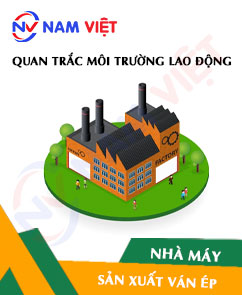
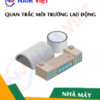
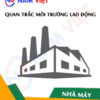



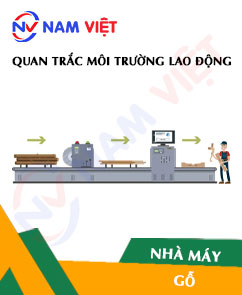
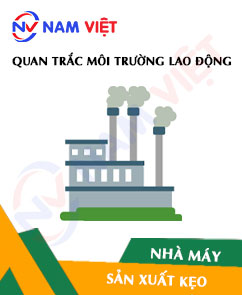
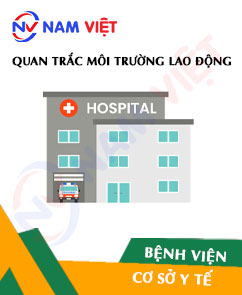


Review Occupational environment monitoring at the plywood factory
There are no reviews yet.